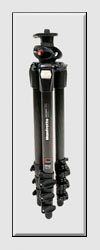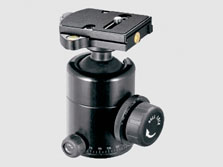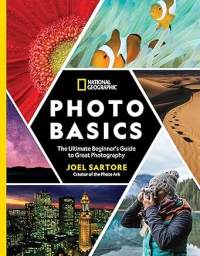

Selecting a Camera Tripod"Choosing the right set of legs"
|
 |
In reality there is much more to consider than
that when choosing a tripod. In
fact, the difference between a good tripod and a poor one can
potentially have a greater effect on the quality of your images than
the model of camera used. And choosing the right one is
not as easy as you might think. For outdoor photographers like me in particular, the important features of a tripod all contradict each other. What we really need is a big, small, heavy, light, short, tall, rigid, flexible tripod, which of course doesn't exist! Whichever model we choose will, however much we pay, be a compromise. The best we can hope for is to find a reasonable compromise based on our own individual requirements. |
When trying a camera tripod in a shop extend all the legs fully. Note what type of clamps it has and how effective they are.
With the legs fully extended press firmly on the collar where they join and note if any of the leg sections flex or buckle, then twist to check for lateral rigidity. Legs usually come in either three or four sections; the former tend to offer greater stability but the later are more compact.
Inspect the rubber feet; they should appear durable and hard-wearing, thick enough to allow for wear over a period of time and rigid enough not to induce any wobble of their own but not so hard and smooth that they will be likely to slip on rocks.
Note how high the camera tripod is without extending the centre column; this is always the most stable way to use a tripod and a decent working height is useful. Also check the minimum working height, particularly if you like to take low-angled landscapes or are a macro photographer. Check how stability is affected when the centre column is extended; does it lock securely and is there any wobble or vibration?
Consider whether the tripod will be versatile enough for your style of photography and to use on the type of terrain you frequent. On rough ground legs that adjust independently to multiple angles are a huge benefit and for nature photographers in particular a centre column that can be moved in the horizontal axis is a real boon.
Whether you are buying the head separate or it comes with the tripod make sure it is sturdy enough to match the legs.
 |
A flimsy head with play in it when fully tightened or which will not lock firmly with the weight of the camera is a weak link which will undermine the whole system, no matter how sturdy the legs are. Look for one which won't twist by hand in any plane when fully locked. Regardless of which type, ball and socket, pan and tilt etc., all the movements should be smooth, well dampened and lock firmly with no “creep” as you finally tighten the knob or lever. |
In my opinion the selection of a camera tripod requires as much care, if not more, than the choice of a camera. It certainly shouldn't just be an afterthought along the lines of, “Oh, any one will do, the cheaper the better!” Buy right first time and you may never have to buy again. Until, of course, your priorities change!
See John Perriment's masterclass - Better Landscape Photography
and visit his gallery at
www.johnperrimentphotography.com
 |
| Image of the Month |
 |
| Click here to download it. |
| Find It |

Custom Search
|
| All of the advice, tutorials, masterclasses and ideas on this website are available to you at no charge. Even so, its upkeep does incur costs. |
|
| If you feel that
the site has helped you then any contribution you make, however small,
would go towards its ongoing maintenance and development. Thanks for your help. |
| Book of the Month |
 |
| Click here to read the review. |
|
|

New! Comments
Have your say about what you just read! Leave me a comment in the box below.